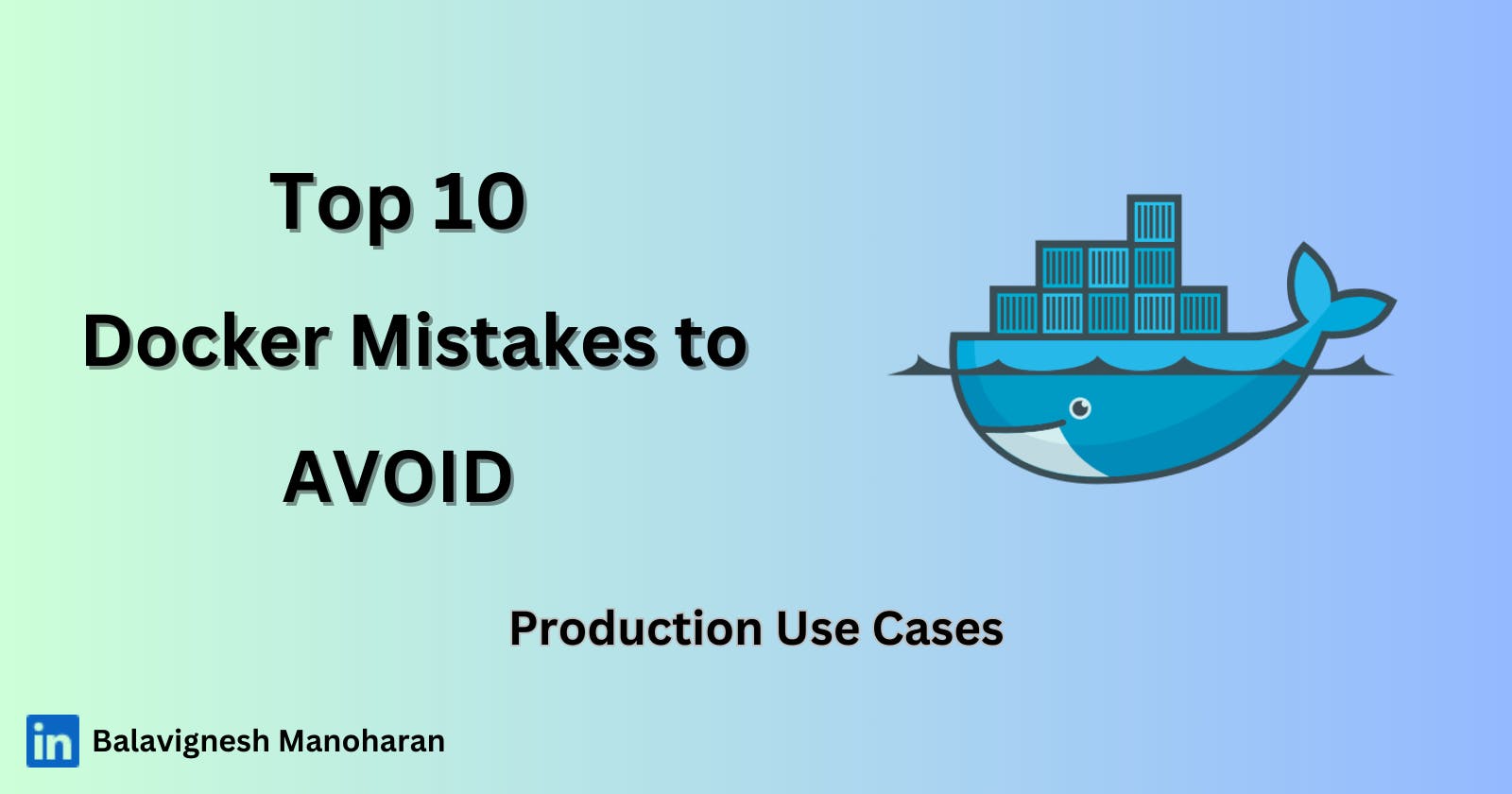Docker adoption rises constantly 📈 and many are familiar with it, but not everyone is using Docker according to the production grade. 👀
Listing down top 10 mistakes to avoid in production according to me:
1. Persisting data inside containers:
Storing data inside the container can lead to performance issues and data loss. Instead utilize volumes to store data externally to the container. An application version 1.0 running in container should be easily replaced by the version 1.1 without any impact or loss of data.
2. Overloading containers with multiple servers:
Running multiple servers in a single container can cause resource contention and hinder performance. Opt for running each service in a dedicated container for better resource management.
3. Deprecated ADD instruction:
The ADD instruction is deprecated and poses security risks. Replace it with copy instruction for safer and more transparent fille copying within your Dockerfile.
4. Neglecting environment variables:
Leverage environment variables for configuring your application. This ensures flexibility without modifying the Dockerfile directly.
5. Skipping local build images:
Always build your docker images locally before deployment. This ensures to test and validate them, avoiding potential issues in production environment.
6. Bypassing docker registry:
Utilize a docker registry to store and share images efficiently. Avoid local storage and use registry for better image management.
7. Untagged images:
Tagging your docker images is crucial for versioning and tracking changes. Always tag your images before pushing them to a registry to maintain version control.
8. Run processes as a non-root user:
By default docker containers run as root. So running an application inside the container with a root user will make it easier for an attacker to escalate privileges on the host and basically get hold of the underlying host and its processes. Your image should use the USER instruction to specify a non-root user for containers to run.
9. Make use of Multi-Stage Builds:
This feature allows you to use multiple temporary images in the build process, keeping only the latest image along with the information you copied into the final artifact. It helps in separation of build tools and dependencies from what's needed for runtime and also reduced image size.
10. Underestimating Docker compose:
Embrace Docker Compose for efficient management of multiple containers, streamlining orchestration and scaling in just few lines of configuration.
Conclusion:
These are the 10 common mistakes which you can rectify in your docker environment today and can secure your production grade docker.
Thank you ! Hope you liked it..👍 Please share with your network if you find this valuable. 🔁
Also if you like to add any other point which you feel is super important, please go ahead and add in the comments. 🙌 👍
